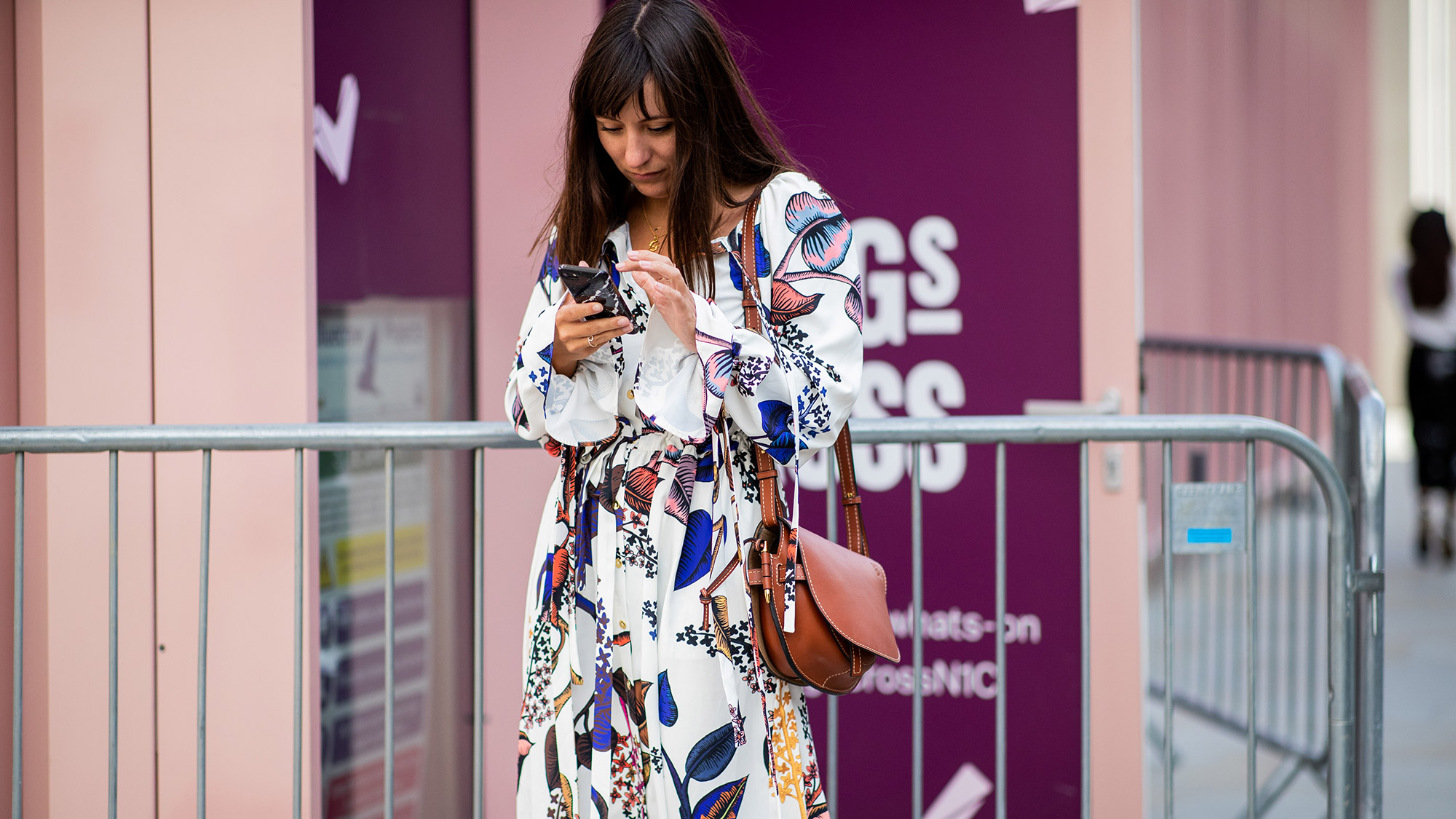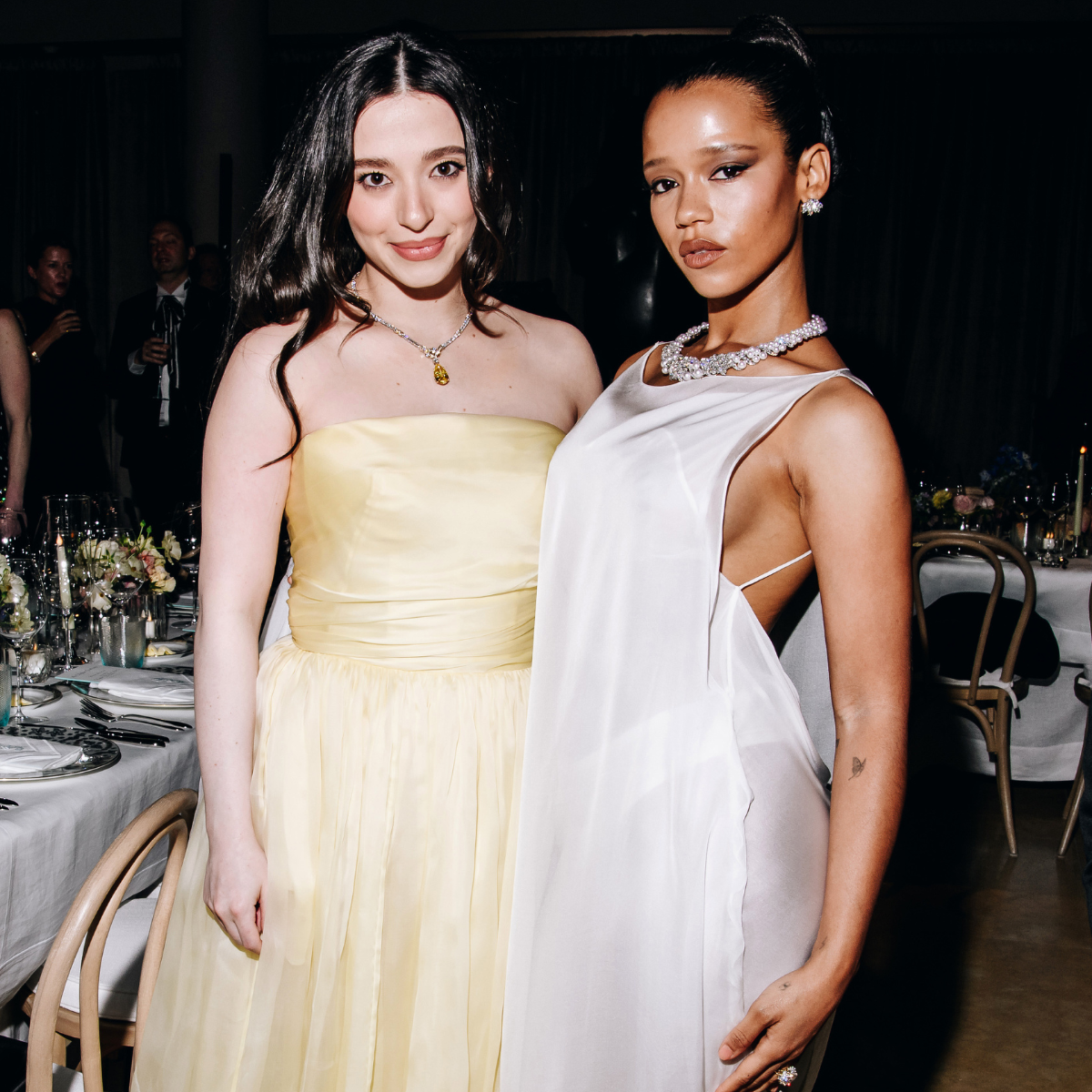'When did dripping in designer swag become our only definition of a successful wardrobe?'

Words by Katherine Ormerod. Why Social Media is Ruining Your Life by Katherine Ormerod, is published by Cassell £12.99
Do you remember how you used to feel on a Friday night as teenager? You’d maybe have bought a brand new top to go with your jeans, spent approximately 90 minutes on your mascara and after having the best time pre-partying with your besties, you’d be buoyed with the confidence of the pack, excited to hit your school disco—or more likely use your fake ID to get into a pub or club.
For me, these moments are some of my favourite fashion memories, partly of course because I was young and excitable, partly because getting ready with the soundtrack of Pure Garage II in the background brings me right back to a rose-tinted version of my youth, but also… partly because there were no phones, no pictures and no social media to capture any of it.
Today’s teenagers get ready in a very different environment. If you can remember the days before the 24/7, 360-degree era of social media, you like me, will now be in your 30s. If you’re younger, you might not even be able to imagine what getting ready, going out, or just dressing up to leave the house at the weekend could be like without a visual record of it all. Because these days if you don’t capture an outfit for Instagram, is there even a point wearing it?
‘Who do you dress for?’ used to be a big conversation, with the right answer being, ‘myself!’ and the wrong answer being, ‘men.’ And while many of us truly are taking the male gaze out of the picture when it comes to the way we present ourselves to society, I’m not so sure it hasn’t been replaced with another, equally problematic set of imaginary eyeballs.
Dressing for social media, or for the validation of the community that follows you isn’t a niche issue in today’s digital, mediated world. Attempting to impress other women with your fashion choices is again nothing new - especially the ones we look up to or admire. But today, there’s a whole generation of women, not just ‘influencers’, dressing for other women they may never have met, let alone got to know well enough to esteem. And the currency of this new women vs. women judgement arena isn’t originality or a pretty dress here or there.
Instead it’s more like an endless conveyor belt of fresh off the shop floor, designer status pieces with eye watering price tags which are seemingly only worn once, photographed artfully then discarded for the churn to continue. That is what fashion has become for a lot of women.
Marie Claire Newsletter
Celebrity news, beauty, fashion advice, and fascinating features, delivered straight to your inbox!
As a style journalist in my 20s, I used to sit looking at other women on the fashion week circuit and my mind would boggle over how the hell they had so many expensive designer clothes. Like, did everyone else in the industry have a trust fund? Over time I realized that yes, some did. But the others?
They were simply borrowing clothes or wearing clothes that had been given to them. Receiving free clothes is something which has been part of my career for over a decade now, so it’s something I know at least something about. As an influencer I’m in a privileged position, but as the vast majority of the brands I’ve worked with personally are high street, I’ve definitely gone through phases of thinking that I needed to spend (much more) money to up my designer game.
It can feel very easy to feel that you’re the only one trying to make a Hobbs skirt and COS blouse look like Céline, while everyone else is wearing actual (old) Céline and I’ve definitely been there as I’ve looked through my peer’s feeds. Amongst influencers there’s almost an acceptance that you have to invest in buying expensive designer clothes to create an expensive looking wardrobe so high-end brands would want to work with you (i.e: spend money to make money, or in that case, expensive free clothes).
But I’ve just never earned that kind of cash, and even if I did, at the moment with a 7-month-old baby and a freelance career, the only place it would be going is into savings. I have gone through phases when I’ve panicked about what to wear to work and industry events and felt almost embarrassed that I didn’t have a gorgeous head to toe luxury look when it felt like everyone else did. From there it’s just a short step to starting to believe that something is wrong or lesser about your life because you can’t afford this stuff and everyone else is more ‘stylish’ than you because they have this stuff. It’s impossible not to compare and that can start to make you feel really insecure about your wardrobe and your own sense of style.
But I don’t really feel like that anymore. The first, most important thing is to remember that style and endless consumption of new, expensive stuff is not synonymous. Let’s not beat about the bush—buying something gorgeous and brand new and wearing it and feeling like a million dollars can be an incredibly empowering and exciting and I’ll be the first to say ‘never undermine the power of a truly great dress.’ BUT. That awesome outfit doesn’t have to send you to debtor’s jail. While I do like to support emerging designers, ultimately, I don’t care what the label at the back of my clothes reads.
If I see a great dress from a brand which some might not deem to be ‘cool’ —like Boden or M&S—I don’t give a t*** that some people will think it’s daggy to be wearing it. Because they are just being unbearable snobs. A great dress is a great dress is a great dress ad infinitum and we should never forget that. What isn’t chic is to spend money you don’t have, because financial irresponsibility and debt are not aspirations any woman who isn’t just waiting for a knight in shining armour to pay her credit card bill should have. And social media can make you think you need to do that and that is something that can be seriously dangerous.
When you look at women’s wardrobes on social media and feel envious of the never-ending designer names tagged on a single picture, you just have to remember that either a) they are richer than you and that is obviously envy-inducing, but unless you are planning on ditching your career and retraining as a stockbroker, it is what it is OR, b) they are influencers who probably live a much more modest life than the #gifted designer booty they feature on their social media accounts would lead you to believe OR c) they are bankrupting themselves spending money they don’t have on clothes trying to keep up with other people they don’t even know.
Owning 100 handbags that cost the same as your monthly mortgage is not ‘normal’. It’s bonkers! I’m not going to say it’s obscene, because every woman has the right to spend their money as they wish, but that crazy standard should have no power to dent your style confidence, or influence how you dress, because it has nothing to do with the skill of being able to express yourself creatively through what you wear.
My personal recipe for building a wardrobe is a mix of old pieces, timeless high street buys and a sprinkling of beautifully made designer pieces, generally bought at a fraction of their RRP from an outlet store or resale site (past season at Bicester Village, pre-loved at Vestiaire, then reconditioned at The Restory is how I roll).
It doesn’t always make me the most effective influencer and I know some of my followers get frustrated that they can’t buy something I’m wearing, but it’s important to me that I make the point that I wear old clothes, buy past season and I’m not dripping in designer swag 24/7.
Because when did that become our only definition of a successful wardrobe? And where’s the panache in that? Don’t get me wrong, I take my hat off to the fashion week street style celebrities who spend weeks planning and coordinating samples and putting together outfits to inspire us all—but that is just not realistic benchmark for anyone to try and achieve on a normal salary and we need to remember that whenever we’re scrolling though 947 Dior saddlebags. Dress for yourself, dress for your bank balance and always remember that a great dress is a great dress.
The leading destination for fashion, beauty, shopping and finger-on-the-pulse views on the latest issues. Marie Claire's travel content helps you delight in discovering new destinations around the globe, offering a unique – and sometimes unchartered – travel experience. From new hotel openings to the destinations tipped to take over our travel calendars, this iconic name has it covered.
-
 The 10 best dresses celebrities from Tiffany & Co.'s Blue Book 2025 Gala
The 10 best dresses celebrities from Tiffany & Co.'s Blue Book 2025 GalaCelebrating the brand's marine-inspired collection
By Sofia Piza
-
 These are the 11 cult designer buys of spring 2025—and they're already selling out
These are the 11 cult designer buys of spring 2025—and they're already selling outFrom Miu Miu's must-have cowboy hat to Loewe's latest bag
By Clementina Jackson
-
 Prince William and Princess Kate have announced their 14th wedding anniversary plans
Prince William and Princess Kate have announced their 14th wedding anniversary plansBy Jenny Proudfoot